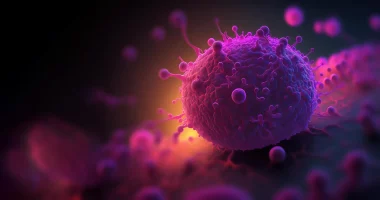Navigating Breastfeeding During Acalabrutinib Therapy: What Parents Need to Know
In the realm of cancer treatment, new medications are constantly emerging, offering hope and extended life to those fighting the disease. Acalabrutinib, a relatively new drug, has shown promising results in treating certain types of cancers primarily affecting the blood and lymph nodes. However, for new mothers undergoing treatment, questions about the safety of breastfeeding while on cancer medication are of paramount concern. This article delves into what is currently known about acalabrutinib and breastfeeding, based on the latest research.
Acalabrutinib, marketed under the trade name Calquence, is a targeted cancer therapy specifically designed to inhibit Bruton’s tyrosine kinase (BTK). This enzyme plays a critical role in the development of the immune system’s B cells, which can become cancerous in conditions like chronic lymphocytic leukemia (CLL) and mantle cell lymphoma (MCL). By blocking BTK, acalabrutinib halts the growth of these malignant B cells, offering a lifeline to patients with these serious conditions.
Despite its effectiveness, the implications of acalabrutinib use during breastfeeding remain poorly understood. The primary concern for breastfeeding mothers under treatment is whether the drug can be transmitted through breast milk and potentially affect the nursing infant. The study referenced here specifically investigates the presence of acalabrutinib in breast milk and provides some preliminary insights into what the findings might mean for nursing mothers.
The study highlights that acalabrutinib is extensively bound to plasma proteins (over 97%), which typically limits a drug’s transfer into breast milk. Given its short half-life—less than seven hours for both the drug and its metabolites—the levels expected to be found in breast milk are likely low. Essentially, the drug does not stay in the bloodstream for long, thereby reducing prolonged exposure to both mother and child.
However, the scenario is slightly complicated by the unknown variables concerning the drug’s active metabolite, whose properties and behaviors in human milk are not well-studied. This gap in knowledge prompts a conservative approach from healthcare providers and the drug manufacturer, who recommend that breastfeeding be paused during acalabrutinib therapy and for at least two weeks following the last dose to ensure the drug is completely cleared from the mother’s body.
The recommendation to temporarily cease breastfeeding is guided by what is termed the “better safe than sorry” principle commonly applied in medical practice. With limited data on the effects of acalabrutinib on a nursing infant, these guidelines aim to protect infants from any risk, however uncertain and potentially minimal it might be.
For mothers faced with the decision of whether or not to continue breastfeeding while undergoing treatment with acalabrutinib, there are several considerations. Firstly, the benefits of breastfeeding are well-documented, ranging from boosted immunity for the infant to strengthened emotional bonds between mother and child. Yet, the risks, although potentially small, are not entirely mapped out.
Dr. Eileen Marks, an oncologist specializing in leukemia treatment, advises, “It’s a decision that involves discussions among the oncology team, the pediatrician, and of course, the patient herself. Each case is unique and needs to be evaluated based on the mother’s health condition, the potential benefits of the therapy, and the specific needs of the baby.”
Alternatives such as formula feeding can provide a practical and safe solution during and immediately following the period of treatment, allowing mothers to continue their cancer treatment without worry. Support groups and consultations with lactation experts can also guide mothers through this process, offering reassurances and alternative ways to maintain an emotional connection with their baby.
In conclusion, while the research into acalabrutinib and breastfeeding is still evolving, existing evidence suggests a cautious approach. As more studies are conducted and more data becomes available, recommendations may be refined further, ensuring mothers facing these difficult decisions are supported with the best information science can provide.
Ensuring the safety of both mother and child remains the priority, and with the continued advancements in medical science, the hope is that future findings will provide clarity and peace of mind to those affected by this complex intersection of treatment needs and maternal consideration.








